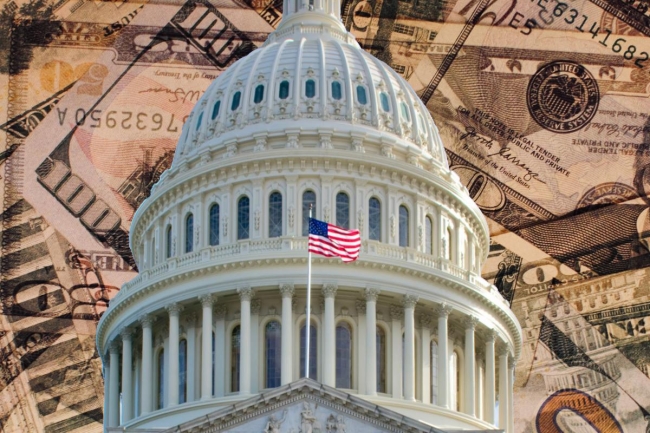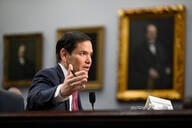You have /5 articles left.
Sign up for a free account or log in.

Douglas Rissing/iStock/Getty Images Plus
The Biden administration’s planned changes to how student borrowers can repay their loans likely mean that fewer students will default on their debts—rendering a long-standing student debt and accountability measure more meaningless than it already is, experts say.
The cohort default rate “was already very toothless even before we got to this current juncture,” said Brian Denten, an officer with Pew Charitable Trusts’ project on student borrower success.
Higher education experts and think tank analysts have called on the department in the last few years to revise the cohort default rate, which measures the percentage of borrowers at an institution who have defaulted over a three-year period and can lead to institutions losing access to federal financial aid. The nearly three-year pause on student loan payments, several experts argued, provided an opportunity to introduce new accountability measures as part of a broader rethinking on how to hold colleges and universities accountable. The recently proposed changes to income-driven repayment have intensified those calls.
The department is currently reviewing more than 13,500 comments submitted about the changes as it finalizes the regulations. Officials have said they plan to carry out the new plan this year.
Currently, about one-third of borrowers are enrolled in income-driven repayment plans, which calculate a borrower’s monthly payment based on their discretionary income and family size. The Biden administration is proposing to offer borrowers more generous repayment terms, including smaller payments and forgiveness after 10 years for borrowers with less than $12,000 in loans. Additionally, borrowers also wouldn’t see their balances grow as long as they make monthly payments, and those who are at least 75 days behind on their payments will be automatically enrolled in income-driven repayment.
All those changes mean that fewer borrowers will default, which makes it more difficult for the department to hold institutions accountable using the cohort default rate. Currently, an institution risks losing access to federal financial aid if the rate hits 30 percent for three consecutive years or 40 percent in one year.
“We will still see people defaulting, but the likelihood of finding a school where 30 or 40 percent of borrowers in a single year are defaulting seems hard to imagine,” said Clare McCann, a higher education fellow at the philanthropic Arnold Ventures who previously worked in the Education Department during the current administration.
The overhaul also will impact other publicly reported repayment data. The department currently tracks—and publicly reports—the percentage of borrowers at each institution who are or are not making progress on paying back their loans, those who are in forbearance, and those who are delinquent. The meaning of some repayment rate categories will likely change with the new IDR plan, several experts said.
Denten said the planned changes mean that it’s more important to ensure that students are opting in to income-driven repayment—an effort that colleges and universities can play an important role in. He doesn’t expect institutions to change their behavior in response to the cohort default rate absent federal guidance.
“I think as [the cohort default rate] has incentivized some of these bad outcomes towards getting people into deferment and forbearance,” he said, “a rethink of repayment rate and IDR could do the opposite and help kind of steer people into IDR and really incentivize schools to make sure they’re informing borrowers about this, period.”
Denten said that the changes to income-driven repayment and other debt-relief programs give the department a chance to rethink how it approaches accountability and what successful repayment means.
“I think the department wants to be careful about how it’s thinking about implementing a repayment rate going forward, as a lot of folks might actually show up as really not making much progress at all given the current circumstances,” he said.
He would still like the department to track defaults and delinquencies over time in addition to repayment, though Denten said the team at Pew is still thinking through how accountability could work with the IDR plan.
McCann said that Congress and the Education Department need to rethink what institutional accountability looks like when the cohort default rate measure is gone. She recommended a measure focused on nonpayment in Arnold Ventures’ comment on the proposed regulations.
“It would look at borrowers who were in some kind of financial distress or who had a zero-dollar payment on an IDR plan, and group all of those borrowers together to determine whether there’s a concentration of borrowers who are going to be in financial distress of some sort,” she said.
McCann said finding a better way to try and identify programs that put students at risk of default while still protecting borrowers is going to be an important conversation for Congress and the department to have going forward.
“We have advanced our policies a lot,” she said. “They’re much more borrower-friendly now. They’re much more responsive to the needs of borrowers and trying to help them avoid default, and we haven’t updated our accountability measures to make sure we’re keeping the higher ed system in check still.”
An Irrelevant Measure?
The cohort default rate was designed to identify colleges that provide little or no value to students, and it has historically been one of the department’s biggest threats, said Robert Kelchen, professor and head of the educational leadership and policy studies department at the University of Tennessee at Knoxville.
In the 1990s, several colleges lost access to federal financial aid, but the rate has caught a smaller number of institutions in recent years.
“It was relevant in the ’90s, but since then, it clearly has not been relevant,” he said.
Some researchers have argued that the rate has been effective in reducing the risk of default. The rate is the only institutional accountability measure based on student outcomes enshrined in federal law; Congress passed an early iteration of the current rate in 1990.
The national cohort default rate has plunged during the pandemic, with 2.3 percent of borrowers who entered repayment from October 2018 to September 2019 defaulting between Oct. 1, 2018, and Sept. 30, 2021, according to the most recent federal data.
Kelchen said he doesn’t expect the income-driven repayment changes to affect colleges and universities, given that few were close to the 30 percent threshold before the pandemic.
“With the availability of private companies to come in and help students get into forbearance, or just to help them navigate income-driven repayment, it’s just really hard to have that share of students default,” he said. “The one wild card to all this is, if repayment begins, are we going to see a whole bunch of defaults right away because students don’t want to repay or they’re having problems navigating the system? But that’s separate from the changes to income-driven repayment.”
The department already is planning to add new accountability measures, which a department spokesperson pointed to in a statement. New gainful-employment regulations, which track students’ debt-to-earnings ratios, are expected this spring, but those rules would only apply to for-profit institutions and nondegree programs at public and nonprofit institutions. The department also is planning to release an annual list of college programs that it says have a low financial value—an accountability measure announced alongside the IDR changes. However, appearing on that list won’t have direct consequences on eligibility to receive federal financial aid.
"The department is committed to building a stronger accountability system in higher education through a multi-pronged effort," the statement said.
Critics of the new IDR plan pointed to the cohort default rate as part of their comments on the regulations.
“Cohort default rates and repayment progress rates on federal loans are important, if imperfect, indicators of whether a particular university (or university program) is preparing its graduates for success in the job market,” wrote the America First Policy Institute, a conservative nonprofit with ties to the Trump administration. “The proposed rule will obliterate the value of these measures by creating a subsidy that ‘prevents’ default by instead effectively recategorizing them as taxpayer losses.”
Adam Looney, an economist who leads the Marriner S. Eccles Institute for Economics and Quantitative Analysis at the University of Utah, wrote that the provision automatically enrolling delinquent borrowers in IDR would “effectively [eliminate] the cohort default rate accountability system.”
That would allow “high-risk institutions to participate in the loan program and enroll more borrowers,” he wrote.




